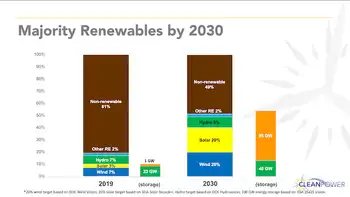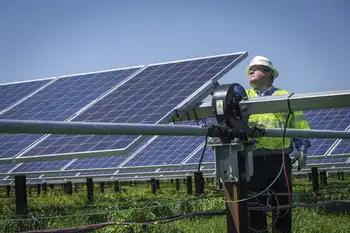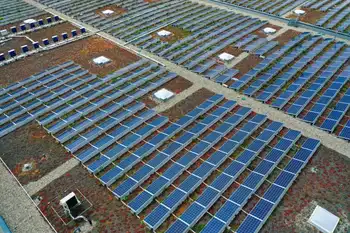In a Test of Capturing Carbon Dioxide, Perhaps a Way to Temper Global Warming
By New York Times
CSA Z462 Arc Flash Training - Electrical Safety Essentials
Our customized live online or in‑person group training can be delivered to your staff at your location.

- Live Online
- 6 hours Instructor-led
- Group Training Available
Various experts consider that approach, known as sequestration, essential to reining in climate change by preventing the gas from being added to the atmospheric blanket that promotes global warming.
The project, announced by American Electric Power, based in Columbus, Ohio, will use a new process — so far tested only at laboratory scale — that uses chilled ammonia to absorb the gas for collection. The process was developed by Alstom, a major manufacturer of generating equipment, and aims to reduce the amount of energy required to capture the carbon dioxide.
Some experts have estimated that nearly a third of a power plantÂ’s energy output might be needed to pull carbon dioxide from the waste stream. Alstom hopes to hold it to 15 percent.
The cost must be kept as low as possible if the technology is to be used on a wide scale. Congress is seen as unlikely to impose enormously expensive restraints on emissions. And under proposals to cap emissions nationally and let companies trade credits for extra reductions, only the cheapest methods of reducing greenhouse gases would thrive in the marketplace.
A recent report released by researchers at the Massachusetts Institute of Technology called for prompt work on demonstrating the necessary sequestration technologies.
The co-chairman of that study, Ernest J. Moniz, a former assistant secretary of energy, said the unusually large scale of the American Electric project made it “quite relevant.”
Climate policy specialists said the project was a significant test of the technology and also a sign that American Electric, which relies on coal for fuel, is expecting carbon emission limits of some kind.
The initial trial, at the companyÂ’s Mountaineer plant in New Haven, W.Va., will take a portion of the carbon dioxide from the flue, compress it into liquid form at more than 1,000 pounds of pressure per square inch, and inject it 9,000 feet below the earthÂ’s surface, a technique that experts say is not well understood but would be essential to large-scale carbon sequestration.
The project will begin next year, the company said. A demonstration 6 to 12 times that size, which would be commercial scale, will be conducted soon after at a plant in Oklahoma.
“This basically represents jumping ahead,” said Stuart M. Dalton, director of generation at the Electric Power Research Institute, a utility consortium, in Palo Alto, Calif. His organization has helped organize a test, one-sixth the size of the West Virginia test, that is supposed to begin this year at a coal-fired power plant in Wisconsin. That carbon will be re-released.
Some plants use a different separation technology to capture and sell food-grade carbon dioxide, used in making carbonated beverages.
Worldwide, there are several places where carbon dioxide is injected into deep wells, but none are power plants.
At the Natural Resources Defense Council, an environmental group, David G. Hawkins, a climate expert, said, “Under any plausible scenarios of global coal use, we are going to need carbon dioxide capture and storage.”
But Mr. Hawkins and other environmentalists said that Congress should not wait for the outcome of demonstrations like American ElectricÂ’s to order mandatory controls on carbon emissions.
Michael G. Morris, the president, chairman and chief executive of the utility, said in a telephone interview that sequestration would be necessary for society but was also enlightened self-interest on the part of his company.
The Energy Department has concentrated on a different technology, converting coal to a gas and taking the carbon out before the gas is burned. American Electric is also pursuing that technology, but the chilled-ammonia method is applicable to traditional coal plants that use pulverized coal technology, and dozens of them are on the drawing boards.
“You, me and everyone else needs to understand that the government talks big and moves slow,” Mr. Morris said.
He said the demonstration would cost $800 million, including work to remove conventional pollutants like soot and sulfur dioxide before carbon separation. The company will seek federal grants and will ask state regulators to let it charge customers.
Carbon from the larger trial at the Oklahoma plant will be sold for injection into old oil fields where pressure and production have fallen.











